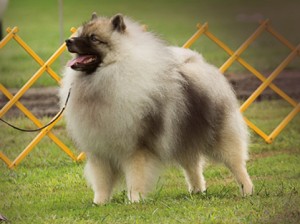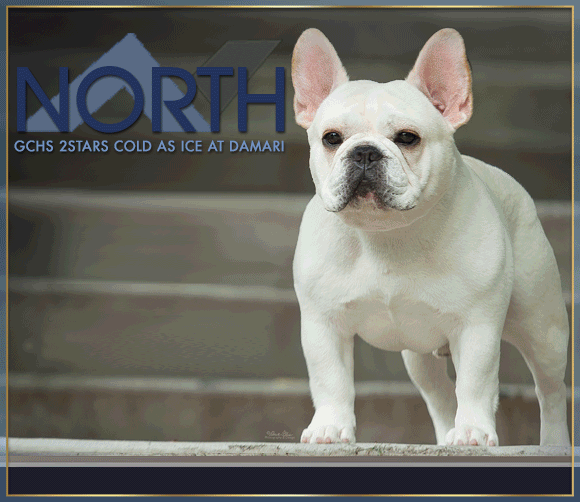From The CC Vault: If It Isn’t Broke, Don’t Fix It…Ways Junior Handlers Can Improve Their Skills
By William Given
Originally published October 2012
photo by Lisa Croft-Elliott
 In the August issue I provided ten helpful hints for juniors. Number 5 on the list was, “If it isn’t broke, don’t fix it.” Over-handling is, I believe, the most common handling error being made by juniors in the ring today. I stated, “Too many juniors seem to believe that if they are not fidgeting with the front end, fixing the back end, or waiving the bait in front of their dog’s face that they are not handling.” Over-handling concerns me because I see it as a learned behavior and those are sometimes the hardest of bad habits to break. For this reason, I want to focus on the topic of stacking and baiting your dog.
In the August issue I provided ten helpful hints for juniors. Number 5 on the list was, “If it isn’t broke, don’t fix it.” Over-handling is, I believe, the most common handling error being made by juniors in the ring today. I stated, “Too many juniors seem to believe that if they are not fidgeting with the front end, fixing the back end, or waiving the bait in front of their dog’s face that they are not handling.” Over-handling concerns me because I see it as a learned behavior and those are sometimes the hardest of bad habits to break. For this reason, I want to focus on the topic of stacking and baiting your dog.
Stacking Your Dog
A properly stacked show dog can show off his conformation qualities to the best advantage. It is important to stack your dog correctly so that his outstanding virtues can be displayed to their maximum and at the same time his faults can be minimized. Practice walking your dog into a straight position because this will aid you in speeding up the stacking of your dog. If you have to lift, pull or drag his body into line, this adds another step and time is always at a premium in the ring.
Setting up the front end
After stopping your dog in a straight position, move the collar or lead to the top of his neck, right behind the ears. Gather the lead into your right hand and place the tips of the fingers of your left hand in the “V” of his lower jaw, almost as if it were a handle. Next, transfer the lead to your left hand.
Place your right hand on your dog’s right elbow, while at the same time gently lifting his head up and away from you with the left hand, then placing his right foot on the ground squarely under his right shoulder. The lead should remain gathered in your left hand while completing this step.
Transfer the gathered lead from your left hand to the right. Place your right hand under the jaw lift the head upward and toward your body while firmly grasping the left elbow with the left hand, then placing that foot on the ground squarely under the dog’s shoulder. Remember to always move your dog’s head away from the leg you are placing.
Now with the lead in your right hand, move the lead or collar up and under his ears and pull upward with the lead still gathered. Place your left hand at the base of the ears or the back of the neck and set them so they are consistent with your breed standard. Continue to hold the lead with your right hand.
Some breeds are stacked without the use of a lead or slip collar. Instead, the hand is used to steady and hold the head by gently grasping the “v” at the dog’s lower jaw with the rest of the hand grasping the dog’s muzzle.
Stacking the rear end
In order to calm and prepare your dog to have its hindquarters stacked smoothly, it is important to have the collar or lead in your right hand and to move your left hand across his topline or along the side of your dog. Often, stroking your dog in this manner and adding a few calmly spoken words will serve to relax and steady your dog. I should also emphasize here that there are no rules about talking to your dog in the breed or juniors’ ring. If softly talking to your dog has a calming effect on your nerves and keeps your dog up while in the ring, then for goodness sakes take advantage of it.
With the left hand, grasp the mid-portion of your dog’s right hind leg and place his right rear foot on the ground, extended squarely behind the rear. When placing his right rear paw on the ground, his hock should be perpendicular to the ground. His rear paw should be placed approximately one inch outside of the position of his front foot.
Next, reach under the loin of your dog and firmly grasp his left hind leg in the mid-section and place his left rear foot squarely on the ground behind the rear of your dog. His left hock should also be perpendicular to the ground. This paw should also be outside of the front paw position and should be the same distance back as the right rear paw. This is the correct manner for stacking all breeds with the exception of the German Shepherd Dog.
Positioning the tail
The position of the tail varies from breed to breed. If you are handling a breed of dog that should have the tail elevated, rubbing under his tail will often help to encourage him to achieve the correct tail carriage. If you are handling a breed of dog who’s tail should be extended straight out from the body, you will likely need to hold the tail in the correct position for the breed.
Making improvements
Highly experienced show dogs may not move from their stacked position until asked to do so. A great many dogs being exhibited in the juniors’ ring, however, do have a tendency to move a foot and it is almost always when you are not looking. It is important to get in the habit of routinely checking your dog to ensure he hasn’t moved his feet. If he has moved a foot, take the time to reposition him.
If your dog’s topline begins to sag, place your right hand under his stomach and gently push upward. To improve the appearance of the topline, you may also try gently pulling your dog’s head forward. This can also be done to show your dog has good length and arch of neck. If your dog tends to pull or lean back, you can correct this by placing your hand under his tail and gently push forward to keep him in the proper position.
It is very important that the judge have as little trouble as possible when examining your dog. The best way to calm and steady your dog while he is being examined by the judge is to hold the lead steady at the head and with your left hand hold or position the tail in the correct position or gently scratch his stomach. This is a great time to use that soft, reassuring voice and tell him how well he is doing.
Baiting Your Dog
Baiting serves the purpose of gaining your dog’s attention and holding it for those periods of time when you are in the ring but not moving him. Baiting aids in helping your dog maintain a stacked position or hold a desirable free stacked pose when standing in front of the judge, or when halting in front of the judge after completing one of his movement patterns in the ring.
Bait refers to any small piece of food used in the ring for the purpose of gaining and holding your dog’s attention. Liver is the most common item used to bait dogs and there are several reasons why. Almost all dogs are alert to the odor and love the taste, it is inexpensive to buy, easy to prepare and also, importantly, it is clean to handle. I have seen a good many dogs baited in the ring with pieces of string cheese and mini marshmallows also. Use whatever bait item works best for your dog.
Baiting should be taught to your dog while you are teaching him to maintain a stacked position. I would highly recommend not using bait in the ring until you can rely on your dog to hold a stack. From either a stacked position or natural stance, the dog should maintain a reasonable distance from the handler. The distance is greater for large dogs than small dogs. The proper distance will also encourage your dog to lean forward and present the judge with an optimum view.
Loose lead method
There are two general approaches used in baiting. The loose lead method is performed by holding the lead slack and the liver about as high as your waist and two to three feet away from your dog. This method is used by virtually all professional handlers and, as a rule, is more effective with a well-trained dog. This is because an experienced dog will be much more likely to maintain his position. If you believe you want to learn and master this approach, start teaching your dog to catch bait. This will become a game for your dog and it will provide him with the opportunity to exhibit his excitement for being in the ring. It will add some fun to showing for you and set you apart from the competition. CAUTION: Do not begin tossing bait in the ring until you are proficient at the toss and your dog becomes skilled at catching it.
Tight lead method
The other method is the tight lead approach. It is performed by holding the lead set in a tight position high on the neck in order to steady the dog and maintain the stacked position. In this approach, the liver is held almost directly in front of the dog’s head so as to gain his attention. This method also enables the handler to position the dog so as to accentuate the dog’s strong points and hide his faults.
The position in which you hold liver will vary with the size of the breed. However, always remember to hold the liver so that your dog’s head is kept in as straight and as flattering a position as possible. I want you to remember that your dog can smell the liver from a distance further than you will ever be standing away from him. He doesn’t even really need to see it, so no waving it in front of him. His nose will tell him where the bait is.
Short URL: https://caninechronicle.com/?p=250310
Comments are closed












